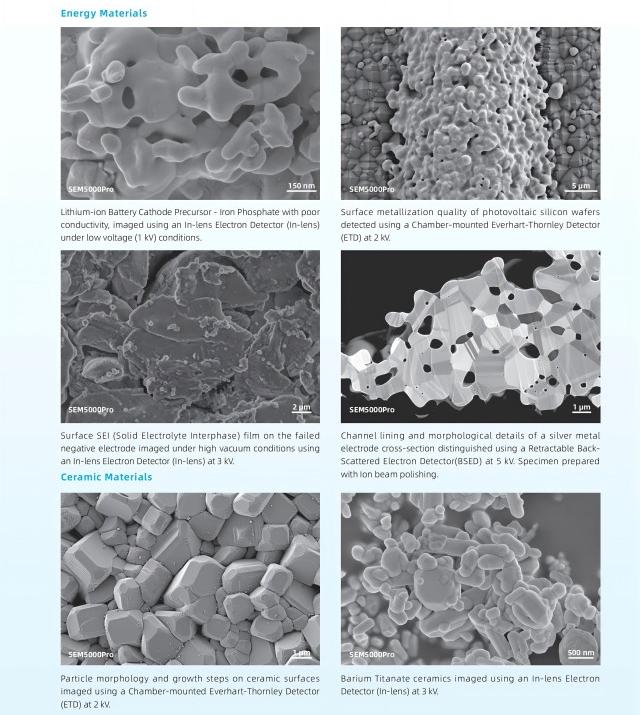Advantages of Field Emission Scanning Electron Microscope (FESEM)
The Scanning Electron Microscope (SEM) is an important tool for observing micro-scale morphology and is widely used in fields such as materials science, biology, and environmental science. With the continuous development of technology, the Field Emission Scanning Electron Microscope (FESEM) has emerged. Compared to traditional SEM, FESEM offers advantages such as higher resolution, greater depth of field, and stronger signal stability. This article will provide a detailed introduction to the principles, characteristics, and advantages of FESEM compared to SEM.
Principles of Field Emission Scanning Electron Microscope (FESEM):

1. Electron Source: FESEM uses a field emission electron source instead of the concurrent electron source used in SEM. The field emission electron source has higher electron beam density and better-focusing performance, resulting in higher resolution.

2. Electron Optics System: FESEM employs advanced electron optics systems, including electromagnetic lenses and electrostatic lenses, to achieve higher imaging quality and stronger signal stability.
3. Sample Preparation: Sample preparation for FESEM is relatively simple, requiring only mild surface treatment to ensure conductivity.
4. Signal Detection: FESEM utilizes multiple signal detection methods, such as secondary and back-scattered electrons, to obtain rich sample information.
Characteristics of Field Emission Scanning Electron Microscope (FESEM):

1. High Resolution: FESEM, with its field emission electron source and advanced electron optics system, offers higher resolution, enabling the observation of finer sample structures.

2. Large Depth of Field: FESEM has a larger depth of field, maintaining good imaging quality during observations and facilitating the observation of three-dimensional sample structures.
3. Strong Signal Stability: FESEM exhibits strong signal stability, ensuring stable imaging over long observation periods.
4. Simple Sample Preparation: Sample preparation for FESEM is relatively simple, reducing the difficulty and cost of sample preparation.
5. Multiple Signal Detection: FESEM can utilize various signal detection methods, providing abundant sample information and offering more evidence for analysis and research.
Advantages of Field Emission Scanning Electron Microscope (FESEM) over SEM:
1. Improved Resolution: FESEM offers higher resolution, allowing for the observation of finer sample structures and expanding the applications of micro-scale observations.
2. Increased Depth of Field: FESEM has a larger depth of field, facilitating the observation of three-dimensional sample structures and providing more realistic observation results.
3. Stronger Signal Stability: FESEM exhibits stronger signal stability, reducing errors during observations and improving imaging quality.
4. Simplified Sample Preparation: Sample preparation for FESEM is relatively simple, lowering the difficulty and cost of sample preparation and improving experimental efficiency.
5. Multiple Signal Detection: FESEM can utilize multiple signal detection methods to acquire abundant sample information and provide more evidence for analysis and research.
As an advanced tool for microscopic observations, the Field Emission Scanning Electron Microscope (FESEM) offers advantages such as high resolution, large depth of field, strong signal stability, simple sample preparation, and various signal detection methods. Compared to traditional SEM, FESEM has a broader range of applications in the field of micro-scale observations and provides powerful support for scientific research in materials science, biology, environmental science, and other domains